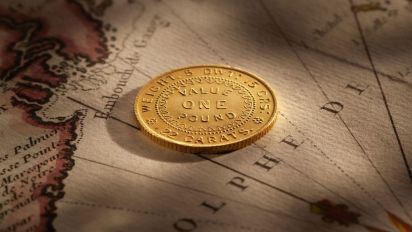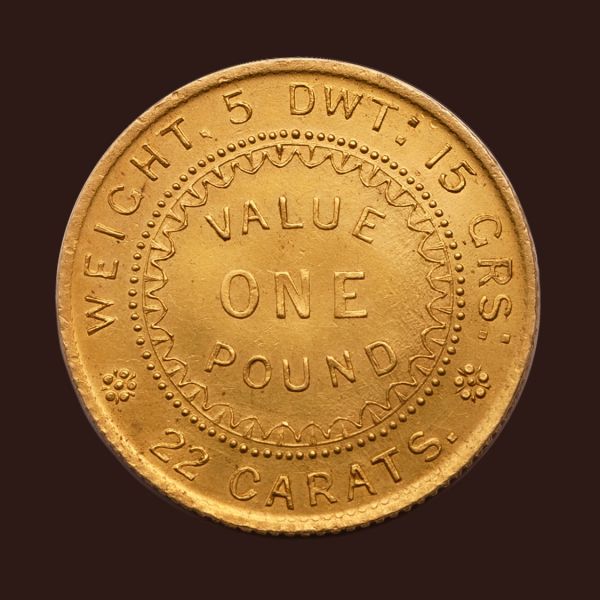1852 Adelaide Pound Type II, a brilliant strike with complete denticles, a trait rarely seen in Type II examples



The 1852 Adelaide Pound holds a very special place in Australia's history as the nation's first gold coin.
it was struck at the Government Assay Office Adelaide from gold that was transported overland from the Victorian gold fields.
It is a classic Australian numismatic rarity, as is the 1813 Holey Dollar and 1813 Dump, the Square Penny and the 1930 Penny.
Its status as Australia’s first gold coin ensures that it will always be sought after and strengthens its investment value. Its investment value is also enhanced by its rarity for we estimate that perhaps two hundred and fifty examples are available to collectors, across all quality levels.
Well circulated Adelaide Pounds are reasonably readily available, with expectations that a collector would sight several examples annually. Once a buyer moves up the quality scale however, the pool of available examples rapidly diminishes. Uncirculated Adelaide Pounds, such as the coin on offer here, are extremely rare and would become available perhaps once every few years.

1852 Adelaide Type II with a brilliantly executed crown and strong legend and strong denticles.

1852 Adelaide Pound Uncirculated with lustrous surfaces.
To understand the miraculous state of this Adelaide Pound it is necessary to provide a snapshot of activities at the Assay Office.
History records that disaster struck during the early stages of the minting of the 1852 Adelaide Pound. Die-maker and engraver Joshua Payne later confirmed that staff had struggled to find the correct pressure levels to exert on the dies to execute a strong overall design.
In the early stages of production, pressure was applied to the edges to ensure that the denticles and legend were strong.
The upside to this decision is that your classic Adelaide Pound from the first production run (Type I) has almost perfect edges and beautiful strong denticles, akin to a picture frame.
The downside to this decision was that the reverse die developed a crack in the legend during the striking of the first forty coins. A further downside occurred. With pressure exerted on the edges, the force applied to the central part of the design - the crown - was softened.
So in summary, an Adelaide Pound from the first production run (Type I) will have strong edges but a soft, poorly executed crown.
Relaxing the pressure in the second production run of Adelaide Pounds lengthened the die usage but created its own shortcomings. For once the pressure was reduced on the edges, the perfection that was achieved in the denticles and legend of the first run of Adelaide Pounds was simply not achievable.
Adelaide Pounds from the second production run will have weakness in the edges and weakness in the 'Assay Office' area of the legend. But, the crown design will invariably be well executed with flattened areas simply due to usage.
So in summary, an Adelaide Pound from the second production run (Type II) will notoriously have weak edges, a weak legend but a strong crown.
The photographs affirm that this Adelaide Pound has a beautiful balance of strong denticles, strong legend and a brilliantly struck crown.
So while an Uncirculated Adelaide Pound Type II is of the highest rarity. A Type II Adelaide Pound that is Uncirculated and has a brilliant strike. Is rarer again!
© Copyright: Coinworks